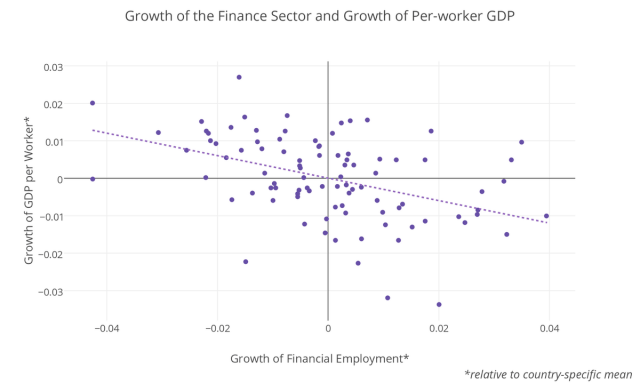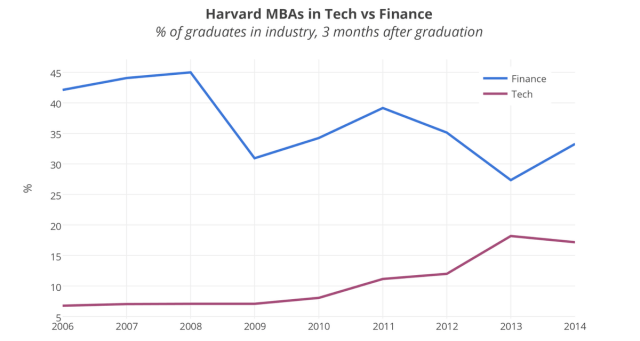
“Finance literally bids rocket scientists away from the satellite industry.”
— Bank for International Settlements study, 2000
***
In the opening pages of American Psycho, a novel set in the finance boom in 1980s New York, a fictional investment banker raves, “I mean am I alone in thinking we’re not making enough money?”
From context, it’s clear that the character is indignant that his — seemingly enormous — paycheck isn’t higher. But, in a sense, financiers don’t “make” money. They just move it around. The sector makes most of its revenue through providing a service, not to their individual customers but to the economy. As Nell Irwin explained in The New York Times: “[Finance] exists to channel capital effectively from savers to investment. […] Most of modern finance doesn’t exist as an end in itself, but to make the rest of the economy more efficient.”
Once upon a time, the finance sector was vilified in Western culture, for exactly this reason. (Also because, since Catholic doctrine banned money lending for interest, in Europe for centuries it was the nearly exclusive profession of Jews). Slowly, capitalism emerged, people realized the benefits of an efficient economy, and finance was lionized.
“While there have been dissenting views, today it is accepted that finance is not simply a by-product of the development process, but an engine propelling growth,” economists Stephen G. Cecchetti and Enisse Kharroubi wrote in a 2012 study. “This, in turn, was one of the key elements supporting arguments for financial deregulation. If finance is good for growth, shouldn’t we be working to eliminate barriers to further financial development?”

Investment banker, American icon (still from American Psycho, 2000)
But these researchers were skeptical, so they dove into the data. They suspected the relationship between financial development and overall economic growth was more nuanced:
“Is [finance good for growth] regardless of the size and growth rate of the financial system? Or, like a person who eats too much, does a bloated financial system become a drag on the rest of the economy?”
They found very strong evidence that the finance sector can, in fact, get too big. Certain measures of size and rate of growth clearly negatively correlate with per-worker GDP.
The authors have recently published a follow-up study, outlining a plausible explanation for why this is. A big part of it has to do with competition for skilled labor: When a Finance Sector booms, it attracts a lot of smart, educated, and talented people. Some of these people, without the boom, would have otherwise started businesses of their own, or made technological discoveries. In one way or another, many of them would have contributed to the growth of the GDP.
Instead, as Kauffman Foundation economist Paul Kedrosky told NPR, during financial booms they get “yanked off into the financial sector never to be seen again.”
When the Finance Sector Eats Too Much

The world would be a very different place if Einstein was a hedge fund manager. – Photo by Taton Moïse on Unsplash
Stephen G. Cecchetti and Enisse Kharroubi of the Bank for International Settlements (BIS) knew they couldn’t just look at the raw statistics on economic growth and finance sector size from a bunch of different countries. More developed countries tend to have slower growing economies than less developed countries for many reasons, and they tend to have larger, more robust financial sectors. To control for initial conditions, the researchers looked at country-specific means for many statistics, and plotted deviations from those means.
One of their findings was that, private credit — the amount of money loaned out by financial institutions to the private sector — correlates to higher per-worker GDP growth. But when private credit grows too much proportional to the country’s GDP, it starts to drag growth back down.
Another statistic they looked at, as a litmus for tracking the growth of a finance sector, was the rate of change in the percentage of a country’s workforce employed in finance. They looked at 21 OECD (developed) countries over six, five-year periods, from 1980-2010.

Rosie Cima, Priceonomics; Source: Cecchetti and Kharroubi
When measuring it this way, they found a “very clear negative relationship” between the rate of growth of a country’s finance sector and the rate of growth of its per-worker GDP. “The faster the financial sector grows,” they write, “the worse it is for growth!”
In Ireland from 2005-2009, per-worker GDP fell by 2.7%, and the finance sector grew by 4.1%. According to their estimates, had Ireland’s financial sector employment been constant from 2005-2009, per-worker GDP would have only fallen 1.3%.
The Relative Scarcity of Skilled Labor

Rosie Cima, Priceonomics; Source: Harvard Business School via New York Times
In the paper, the researchers concede that their findings are counterintuitive. After all, a more developed financial system reduces transaction costs, and makes it easier for entrepreneurs to raise capital and without taking on disproportionate risk. However, they also point out that the financial industry requires quite a few resources of its own to do so:
“[The industry] requires not only physical capital, in the form of buildings, computers and the like, but highly skilled workers as well. Finance literally bids rocket scientists away from the satellite industry. The result is that erstwhile scientists, people who in another age dreamt of curing cancer or flying to Mars, today dream of becoming hedge fund managers.”
Three years later, in February 2015, the researchers published a follow-up working paper, examining this hypothesis. In it they build a model of how financial growth and economic growth could have this kind of competitive interaction.
You can read the paper, and learn more about their model, here. There are two key features: the first is that financiers favor lending capital to relatively low-productivity projects — like construction and property development. High-productivity projects tend to be riskier, and it’s harder for them to pledge their returns as collateral. The second feature is, as hypothesized, that growth in the financial sector can compete with other industries for skilled labor.
Their analysis of manufacturing industry data reveals that, as predicted by the model, sectors highly dependent on R&D do in fact suffer disproportionately during financial booms.
As The New York Times’ Neil Irwin has pointed out, this might be cause to celebrate the ascendency of the tech industry, in the wake of the 2008 financial crisis. Tech might be experiencing an unsustainable boom itself, but that boom might, “serve the overall economy better than the old [financial] way.”
This post was written by Rosie Cima; you can follow her on Twitter here. To get occasional notifications when we write blog posts, please sign up for our email list



